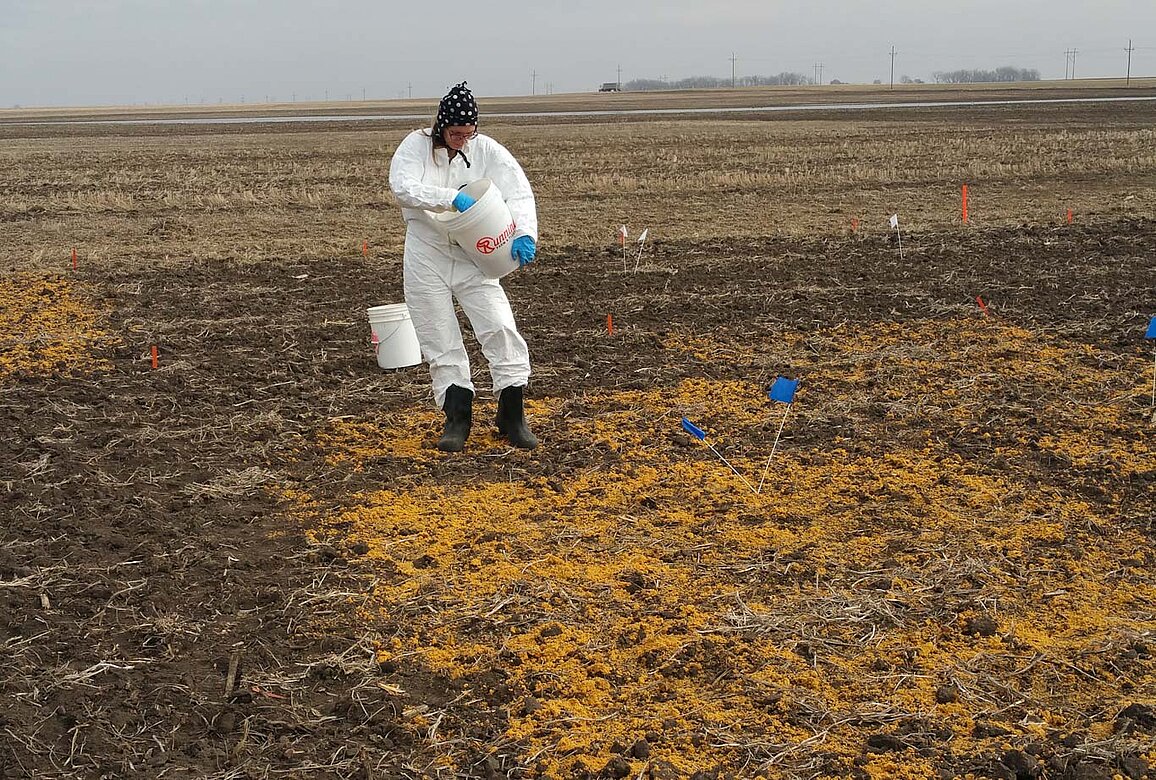Distillers Grains Can Be Used as Fertilizer

Distillers grains, primarily a livestock feed, also could be used as fertilizer on some crops, research at NDSU’s Carrington Research Extension Center shows.
Center soil scientist Jasper Teboh and research specialist Szilvia Yuja started this research in 2015 after Casselton, N.D.-area producers near the Tharaldson Ethanol plant began asking whether applying distillers grains could benefit their crops. Distillers grains are a coproduct of producing ethanol from corn.
The plant was producing excess condensed distillers solubles (CDS), distillers grains’ liquid form. Producers could get the CDS for little or no cost.
Teboh and Yuja tested CDS, which can be surface applied or injected into the soil, and wet distillers grains (WDG), which can be applied using a manure spreader, on corn crops from 2015 to 2017 and on wheat from 2016 to 2019.
“We wanted to look at the contribution and impact of phosphorus (P) from these coproducts on yields of corn and wheat,” Teboh says. “These two crops have high phosphorus demand and are, therefore, more responsive to phosphorus fertilizer.”
The study shows that corn distillers coproducts, when applied to supply the same rate of P as conventional fertilizers, produce similar yields, or in some years better yields.
“An added benefit is that they supply other macro and micro nutrients as well, which lowers the need for synthetic fertilizer inputs,” Teboh says.
Distillers grains aren’t a replacement for conventional phosphorus fertilizer sources, however.
“They are simply an alternative source of a multiple nutrient supply when farmers can get them when an ethanol plant can give it for free or sell at attractively discounted rates (specifically CDS),” Teboh says.
He recommends producers get the distillers grains tested before applying them on a field because the nutrient content is different between WDG and CDS, and also varies among batches.
----
For more information: Jasper Teboh, 701-652-2951, jasper.teboh@ndsu.edu, www.ag.ndsu.edu/CarringtonREC/documents/annual-reports/2019-annual-report-web.pdf


